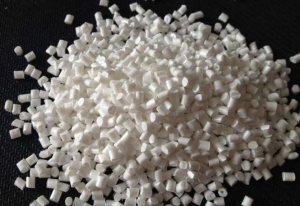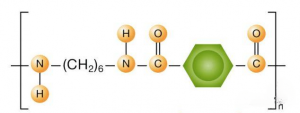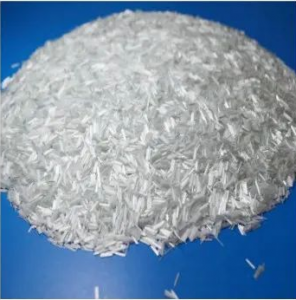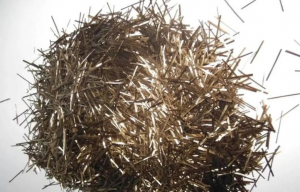In our country, with the continuous development of industrial production, the production industry as a whole demand of high temperature resistant nylon shows a rapid growth.
However, at present, most of the high temperature resistant nylon materials used in the production of our country still need to rely on imports, independent production materials can not meet the industrial production needs of the problem, the further development and progress of the related industries caused a certain degree of limitation, based on this, the development process and future direction of high temperature resistant type materials are preliminarily discussed.
Ⅰ. Synthesis process
High temperature resistant nylon materials are produced in various ways, including five main types:
(1) High temperature solution polycondensation production method
(2) Low temperature solution polycondensation production method
(3) Production method of interfacial polymerization
(4) polyester condensation production method
(5) Production method of melt polycondensation
Among them, the solution polycondensation production method of high temperature and high pressure is the most common. This method requires nitrogen as the atmosphere protection, so that the polymerization reaction of binary amine or dibasic acid can occur under the action of catalyst, so as to realize the large-scale production of semi-aromatic nylon.
Another commonly used production method is the polycondensation of low-temperature solution, which uses the low-temperature solution of binary amine or dibasic acid with higher stability. When preparing the solution used for production, a stabilizer needs to be added to maintain the stable state of the solution in the production process, and the corresponding catalyst also needs to be added during the polycondensation production.
The temperature of low temperature production is about 100℃. After the wet material is obtained by solution condensation, the suitable high temperature resistant nylon material can be obtained by drying treatment.
The main raw materials of interfacial polymerization are acyl chloride compound and diamine with benzene ring. During production, acyl chloride compound needs to be evenly distributed in organic solvent to form a uniform organic solvent phase. Diamine, on the other hand, is dissolved in water containing acid captors, forming a uniform water phase.
The production process of this production method mainly uses the characteristics of high reactivity of acyl chloride compounds to make the interface between the organic phase and the water phase of the raw material react to produce semi-aromatic high temperature resistant nylon. This production method is not suitable for large-scale production in practice because of its high cost and high requirements on equipment.
Structure diagram of aromatic polyamide
The research on polyester condensation production method is still in the trial stage. This kind of technology has been applied in the synthesis of semi-aromatic nylon, but there is still no exact research conclusion on how to achieve stable production and use of this method.
Melt polycondensation, even if the raw material in the molten state of polycondensation reaction to produce polymer method, the method is also a common production method of semi-aromatic high temperature resistant nylon.
This method needs to be carried out in the environment of high temperature and atmospheric pressure, because the high temperature environment can ensure the continuity and stability of production, so the production cost of this method is relatively low. The main shortcoming of this method is that it is not suitable for producing materials with higher melting point.
Ⅱ.Copolymerized nylon
1. Homopolynylon
The main advantage of the production of polymer materials based on the basic principle of homopolymerization is that the source of raw materials is wide and can be produced at a lower cost. Similarly, the homopolymerization technology is suitable for large-scale production and can achieve a higher productivity.
The main limitation of using homopolization as the basic principle for production is that this technology has relatively high requirements for production equipment and relatively complex technological flow in the production process. At present, the semi-aromatic high temperature resistant nylon produced by homogenization technology is widely used in the world, including MXD6, PA46 and PA12T.
The organic materials used in the polycondensation process of MXD6 type nylon are m-benzoylamine and adipic acid, which belong to semi-aromatic nylon materials. The crystal performance of this material is superior, and its molecular formula is:
MXD6 type materials can be used to produce fiber materials in industrial production. Because MXD6 materials have obvious crystallization characteristics, this type of materials also have low overall water absorption, resulting in relatively high deformation temperature, high resistance to tensile action and high resistance to bending. And the material after forming the risk of retraction is relatively low advantage characteristics.
2. Copolymerized nylon
At present, the copolymerization types of high temperature resistant nylon materials commonly used in the market mainly include PA6T, PPA, PA4T models and PA10T. The above nylon materials belong to the more prominent types of copolymerized nylon materials, and different types of materials have certain differences in the use of advantages.
Among them: the main organic materials used by PA6T type materials are dichroic materials in aromatic group and dichroic materials in aliphatic group. This type of nylon material has good heat resistance and can maintain shape stability in high temperature environment, so it is widely used in industrial production as film in fiber manufacturing or machine parts manufacturing. The chemical structure of PA6T nylon material is:
However, PA9T nylon material synthesized by fusion of nonenediamine and terephteric acid is better in heat resistance and has more prominent advantages in dimensional stability under high temperature environment due to the production mode of fusion.
The first manufacturer of this type of material is the Japanese Cola Company, this material is mainly used in the production of electronic products, information equipment production and auto parts processing. The chemical structure of PA9T nylon material is as follows:
Another kind of PPA material is also more common. The raw materials include m-phthalic acid, terephthalic acid, adiponic acid and adipdiamine, etc. This type of material is also produced by condensation polymerization and belongs to semi-aromatic nylon material. PPA also has the characteristics of good dimensional stability, and this material has the advantages of low water absorption, easy processing, can be processed by injection, extrusion and other forms.
Cao Min’s team compounds 1, 12-dodecane enediamine material and terephenic acid material into monomer materials. Using deionized water as solvent as the material and prepolymerization production methods, Cao Min’s team has achieved the scale production of PA12T, also belonging to semi-aromatic high temperature resistant materials, which makes it possible for our country to produce high temperature resistant nylon material using our own technology.
PA12T has high stability in high temperature environment. The melting point of the material has reached 293℃, and decomposition will not occur below 418.7℃.
As for the monomer materials obtained by Liu Yuchen and his team, the main raw materials are sebacediamine, terepthalic acid and aminoundecanoic acid. The materials also need water as the solvent. The decomposition of PA10T/11 material will not occur below 385.2℃, and thermal decomposition will not occur below 439.2℃. The melting point of this type of material is 281.64℃. PA10T/11 better retains the main advantages of high temperature resistant nylon material.
Yang Guisheng’s team focuses on how to use flame-retardant nylon and ordinary nylon to produce nylon materials with both high temperature resistance and flame-retardant properties.
The team is working on a material that can be produced at temperatures below 350℃ and that has the general advantage of being resistant to high temperatures, as well as the main unique advantage of having an adjustable ignition point.
The nylon materials produced by PA6T and PA10T studied by this team also have the advantages of adjustable ignition point, good mechanical properties, relatively low water absorption, and low production cost.
In addition, in recent years, the research of high temperature resistant materials has also made great progress abroad. For example, Arkema of France and Toyobo of Japan have jointly developed a nylon material with the advantages of high temperature resistance of castor oil, and the material has the advantage of very low moisture absorption rate.
In addition, the production technology of interfacial polymerization has also achieved relatively rapid development in recent years. Zhang’s team studied how to produce nylon materials by surface combination at room temperature when the main materials are 1, 4-cyclohexylenediamine, p-fluoro-benzoyl chloride and 1-bis (4-hydroxybenzene) -1-phenylethane. The developed product has better characteristics and advantages of glass transition, and the nylon material will not have a big shape change after production.
The material is able to maintain structural stability below 465℃, while maintaining elastic stability and color stability within 7h, even when used at 220℃. The team continued to investigate the possibility of producing a high temperature resistant nylon material from the reaction of 1-bis (4-hydroxybenzene) 1-phenylethane, which could avoid thermal decomposition at temperatures below 425℃.
The obtained nylon material also has the stability of being used at 200℃, its complex viscosity can reach 990~1350Pa·s at 310℃, and can maintain the transparency of nylon fiber itself. In addition, in recent years, the research of high temperature resistant nylon material obtained in our country not only the performance of the material itself is quite close to the international standard, but also the production cost can be controlled more effectively.
3. Functional improvement
The optimization of high temperature resistant nylon material includes glass improvement and functional improvement. The glass improvement mainly includes: enhancing the tensile and bending strength of high temperature resistant nylon material by introducing glass fiber and carbon fiber, reducing the dielectric strength and constant by dielectric modification, introducing halogen-free flame retardant to achieve the flame retardant property of the product, introducing special additives to improve the corrosion resistance of nylon material, introducing toughening agent to improve the toughness of high temperature resistant nylon, etc.
Functional improvement is to add fillers with special functions in raw materials, so that the function of nylon material can be further enriched, in order to develop nylon materials with multifunctional characteristics.
Filler technology has been relatively mature, through the form of filler to optimize the nylon material has been relatively cheap, the main limitation of the current packing operation is that there is insufficient stability of the quality after the packing.
Nylon glass transition
When selecting the type of filler, when the filler itself also has heat and high temperature resistance properties, the performance of nylon material in heat and high temperature resistance can also be improved to a certain extent.
When the filler material with better heat resistance performance is used, the heat resistance of this type of nylon material can be optimized; When used for the semi-aromatic high temperature resistant nylon material described in this paper, the heat resistance of the material can be further optimized, and can ensure that the composite material after adding filler has a more stable heat resistance.
At present, research team and researchers in our country also make systematic study on the production of high temperature resistant nylon. According to the related research results of Li Qingfeng’s team, in the production of semi-aromatic high-temperature resistant nylon materials, compared with the traditional composite alkali-free E glass fiber, the use of basalt fiber as a composite material can further improve the high-temperature resistance performance of nylon materials, and can be used to improve the overall strength of nylon fiber materials. And it can effectively reduce the water absorption of nylon material.
Basalt fiber
The joint study of Wang Fei and his team showed that the modified nylon 12 produced by adding the modified material to improve toughness during the production of nylon material has better oxidation resistance and higher material toughness compared with the traditional material in the high temperature environment.
Zheng Peisheng’s research team focuses on the multifunctional improvement of high temperature resistant nylon resin. By adding glass fibers and carbon fibers into nylon resin materials to form composite materials, the heat resistance of high temperature resistant nylon resin is improved, which can avoid embrittlement and other phenomena of high temperature resistant nylon resin in high temperature environment. This type of material can replace metal. It can be used as automobile parts and shell material, and it also has good electromagnetic shielding performance.
In addition, the research team of Youse Yaran-Arani investigated how to use sulfonated graphene as a nylon composite, and the resulting composite nylon improved its dielectric properties by more than 10 times. In addition, in the production of semi-aromatic high temperature resistant materials, the nylon material produced by Bu-PPiA and BM composite is equipped with more prominent impact resistance advantages, and the fuel oil has better fire resistance, so it can be widely used in the automobile production process.
To sum up, in the world, the only companies capable of large-scale production of high temperature resistant nylon materials in line with industrial demand include the giant polymer material producers such as Solvy, DuPont and DSM. As the production enterprise of nylon material in our country, we still need to study the production of polymer nylon material further. We can choose the technology which can meet the demand of production cost control and large-scale production of polymer nylon material.
We supply all kinds of nylon stabilizer, antioxidant, widely used in Europe, the United States and other customers.
Enquiries are welcome at any time: little@syntholution.com
Post time: Jun-07-2023














